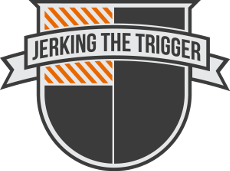Shooters know that frequent training and practice are the best ways to maintain and improve your shooting skills. However, there are many good reasons why we don’t make it to the range every week. A savvy shooter can use “dry fire” to maintain and improve their skill set at home without ever firing a round.
Dry fire practice is the act of using an unloaded firearm to repetitively practice various weapon manipulations in order to form “muscle memory.” You can dry fire practice anything from shooting positions, to trigger control, reloads, malfunction clearance, target transitions, and everything in between. While this practice may not be as effective as actual live fire practice, it is certainly better than nothing.
Caution
Dry fire is probably sounding pretty good to you at this point but there is a dirty underbelly to this type of training that is rarely mentioned. If an untrained shooter embarks on a dry fire regimin without direction, they will likely reinforce bad habits rather than create positive muscle memory. There is immediate feedback from a trainer, timer, or target when completing live fire training. Dry fire practice provides very little feedback which can lead to a shooter continuing to repeat poor habits unknowingly. Muscle memory cuts both ways – good and bad.
You can not do enough bad repetitions to create good habits. Dry fire is not a substitute for training and the untrained will likely make their situation worse if they persist in bad habits and poor technique.
Tips for Success
Triple check that your firearms and magazines are unloaded. Nothing will put a damper on a dry fire session faster than shooting a hole in your wall or worse. I like to completely remove all of the ammo from the room when I practice.
Have a plan. Just like anything else in life, you will get more out of your time when you focus. If you have a plan, you can be sure that you are not just repeating the same drills over and over. Think of it like weight lifting, you may not want to work the same muscle groups several days in a row. Plot out your time so that you can work different skills.
Get the gear. Things like snap caps, dummy rounds, and inert training barrels can be a tremendous aid to your efficiency and safety when dry firing. They can also help prolong the life of certain types of firearms that don’t tolerate dry fire.
Do the things that aren’t fun. We, as humans, tend to prefer to practice the things that we do well rather than the things that we do poorly. It is easy to do that reload drill that you can absolutely smoke but not as easy to make yourself work those double feed clearances that you are painfully slow at completing. Don’t train to stroke your ego. Train to find your weaknesses and press through them.
Get a shot timer. I mentioned before that dry fire doesn’t really provide feedback about your performance since there is no target to check and no trainer watching your progress. However, there are some shot timers that are sensitive enough to pickup the sound of dry fire. You may even be able to download one for your smart phone. The timer can provide you real data for how you are progressing. I especially like using the shot timer to track my reloads.
Walk before you run. It can be extremely helpful to do several repetitions at half speed. Use this time to concentrate on doing every motion correctly and checking for unnecessary movements. Make sure you can do everything right at half speed before starting to move faster.
Try new things. So you want to change the way your grip your handgun or the way you complete a reload? Consider working through it at home first. I like to dry fire practice a new skill, like using the slide release instead of grabbing the slide during a reload, for several days at home before I head to the range. That way I can hit the ground running during live fire. Make sure you give yourself plenty of time to make the new skill second nature before you need it on the range.
Record your practice sessions or have someone watch you. If you can watch video of yourself completing a drill, you might notice something that you otherwise would not have seen since you were absorbed in the drill. A second set of eyes are always helpful in correcting problems with technique, especially if those eyes are more experienced than you.
Un-screw your gear at home. Dry fire can be a great time to find out that your new cool guy chest rig blocks your draw stroke or that your magazine pouches tend to leave a trail of gear behind you as you run. Fix this stuff at home. Don’t be “that guy” at the range.
Put everything to the test. The only real test of your dry fire will come on the live fire range. If you are not maintaining or improving your skills, you may not be doing something right.
Conclusion
Dry fire practice can reward you with improved performance or cripple you with bad habits. Be safe and do it right and you will have success.

I really find that a laser trainer helps out with dry fire practice. Something like the Laserlyte LT-Pro or the Laser Ammo SureStrike training bullet. Both are excellent products, and help me immensely.